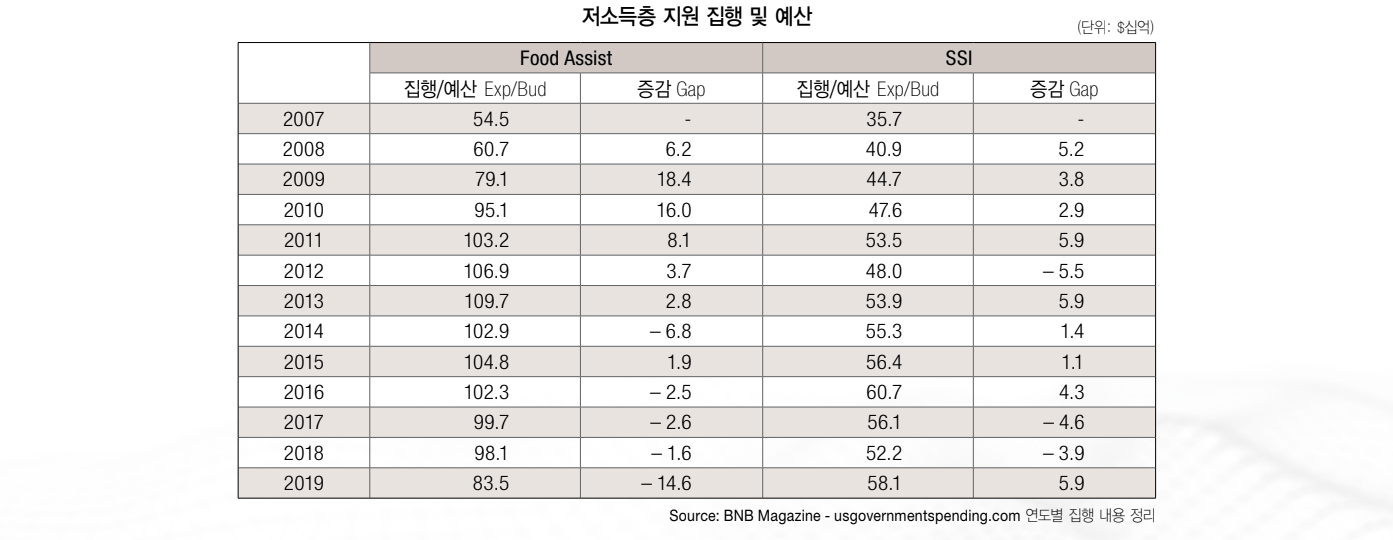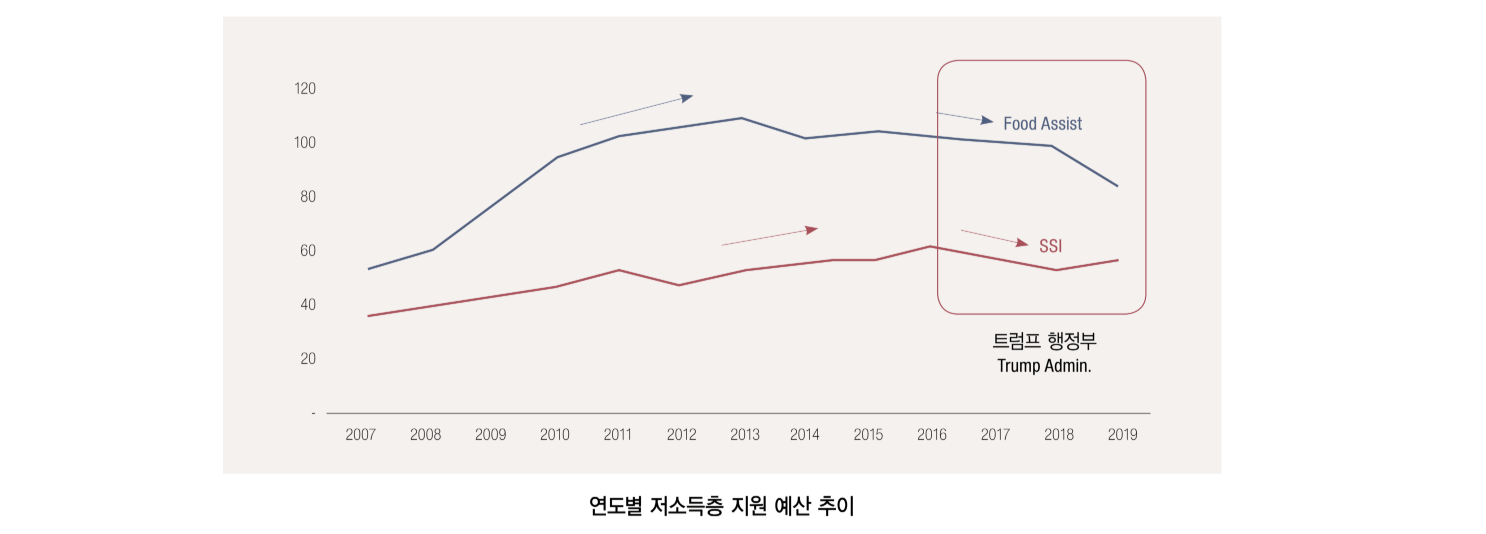Review of Budget Expenditure for Low-income Families Support in the U.S.Let’s look at how social welfare spending has changed since the Trump administration took office. First, I will briefly review the American social wel-fare system. The American social welfare system is divided into the public pension system for retir-ees and the disabled, the Medicaid for the disabled and the Medicare for the elderly aged more than 65, the industrial accident insurance and unem-ployment insurance, Income support (Supplemen-tal Security Income) and Supplemental Nutrition Assistance Program (SNAP).
Review of Budget Expenditure for Low-income…
Medicaid is a public health insurance for people with low incomes under 65 years old and disabled people. Disability pensions are pensions paid to people who are unable to work due to illness or physical or mental disability, regardless of income level. In 2017, approximately 10 million people re-ceive disability pensions. Supplemental Income Security (SSI) is a federal government system to provide support for the poor, the elderly, and the disabled based on prop-erty level of the recipient. In 2017, the Supplemen-tary Income Security (SSI) beneficiary was 8.26 million, but the number of beneficiaries in April 2019 dropped sharply to 5.42 million. The Trump Administration plans to save a total of $ 72 bil-lion over the next decade in disability pension and supplemental income assurance expenditures.Supplemental nutritional support, called food stamps or SNAPs, are a system in which the fed-eral government subsidizes food-borrowing cou-pons or e-card-based EBT to support low-income and vulnerable groups. The number of Americans who helped with supplemental nutrition (SNAP) in 2017 was 42.49 million. However, according to the US Department of Agricul-ture’s Food and Nutrition Service, the plan is to gradu-ally reduce the number of recipients to 34.35 million by 2019. In this part, the Trump Administration plans to save a total budget of $ 191 billion over the next decade. Let’s review how the Trump Administration and several past administrations actually spending their budgets. From 2007, government spending on food assistance has steadily increased through 2016, but has continued to decline for three consecutive years since then, and the budget for 2019 has also decreased compared to the previous year. Food support government expendi-ture on the chart includes both direct support and ad-ministrative costs.

In terms of enforcement and budgeting related to supplementary income security, the amount of enforce-ment has been steadily increasing since 2007, exceptfor 2014, which has been reduced since 2017 when the Trump administration began implementing the budget. However, the 2019 budget increased by $ 6 billion over the previous year’s enforcement amount. We can see that the overall cash support for low-income earners has declined since the Trump administration.

This trend is easier to understand when looking through the graph. The graph shows that the budget has increased sharply since 2008, when the Obama administration was in the process, and has been gradually decreasing since 2016.

If so, it is necessary to consider why the Trump adminis-tration’s ongoing decline in welfare-related expenditures for low-income families. Trump’s values on social welfare would also have affected. The next thing you can think of is the de-cline in demand for social welfare due to economic revitaliza-tion, and finally, the fact that the conditions and qualifications for receiving low income earners’ support are made more difficult than in the past. According to a report from the Heritage Foundation, Trump said, “I think there is a concern that the welfare of low-in-come families will weaken their will to work.” He also reports that it is “incorrect to count household incomes.” Lastly, “I think that promoting work and marriage is the most effective welfare.” It can be assumed that Trump’s philosophy partially affected the decline in low-income welfare spending. Trump’s most prominent achievement is economic revitaliza-tion. It has recorded a rapid growth rate of more than 3% since Trump’s takeover and unemployment rate has dropped to 3.6%, the lowest level since the late 1960s, in April 2019. The unemployment rate for blacks also dropped to 6.7% in the same period. Median income per household also reached $ 64,016, the historical high.
Management
BNB Magazine 2019, July ©bnbmag.com
ABOUT US / SUBSCRIBE / ADVERTISE WITH US / PARTICIPATION / CONTACT /